“But the question that everyone wanted answered was whether I would have the nerve and the strength to start the whole process from scratch. I said yes; otherwise I would be someone who had no dream left, and without dreams I would not want to live.”
From Conquest of the Useless: Reflections from the Making of Fitzcarraldo, by Werner Herzog
The greatest epics are movies unparalleled in magnificence. Their visions are only matched by the jaw-dropping spectacles they exhibit on screen. Every frame carries tremendous ambition that translates into piercing emotions for the audience.
These filmmakers had the audacity to dramatize their ideas in majestic splendor. They transport us from vast desert landscapes to the gaping void of space, from dismal jungles to countries torn apart by the drums of war. But there is something all of these epics share in common. However Homeric their journeys are, they all lead down a long, winding path into our humanity.
15. The English Patient (Anthony Minghella, 1996)
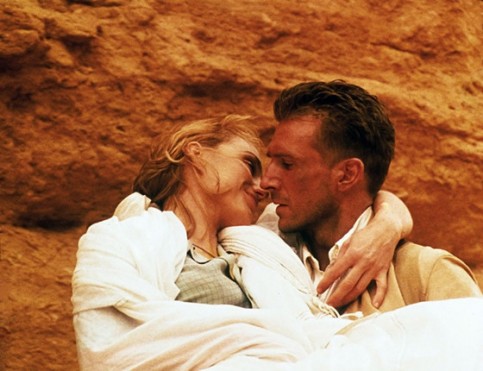
Critics have hailed this film as “the Casablanca of the late 20th Century”. Roger Ebert compares director Anthony Minghella’s visual bravado with that of David Lean. So what makes The English Patient earn such high praise?
It takes place in Italy in World War II. A nurse looks after a badly burned man, known only as the English patient. From the start, we are bombarded with intriguing character and plot questions, each and every one falling into place as the movie progresses. The story elegantly leaps in time, sweeping us like sand in a desert storm. When it finally settles, we feel as burnt as our title character.
The Conversations: Walter Murch and the Art of Editing Film recounts editor Walter Murch’s conversations with the author of the book, Michael Ondaatje. They give interesting views on movies and storytelling, and it is a must read for anyone interested in film editing. Ondaatje’s novel is also highly recommended.
Anthony Minghella’s adaptation is nothing less than a champion for flawless storytelling. Its greatest quality is the intimacy we are allowed to share with the characters.
14. The Last Emperor (Bernardo Bertolucci, 1987)
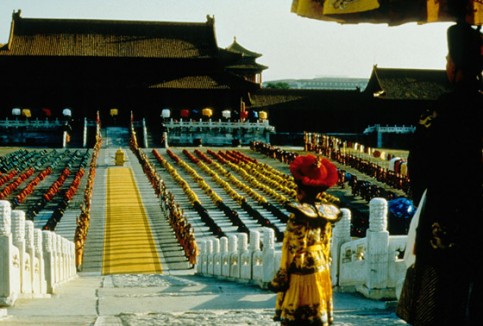
Bertolucci collaborated with master cinematographer Vittorio Storaro in many films . These include Last Tango in Paris and The Sheltering Sky. However, it is in The Last Emperor that they are both at their finest. The movie is a visual morsel, and it will make your eyes salivate from the first shot to the last.
This biopic tells the story of Pu-Yi, the last emperor of China. The film jumps back and forth across time, from his childhood on the Chinese Throne to his inevitable abdication, from his imprisonment to his release into a world that has left him behind. The film is not the royal tale of an emperor, but the life of a man and the history of a nation.
Bertolucci was given exclusive permission to film in The Forbidden City, a jaw-dropping palace complex built in 1420. It is now a UNESCO World Heritage Site.
The Last Emperor is a remarkable epic with arresting visuals and an amazing score to accompany them.
13. Ben-Hur (William Wyler, 1959)
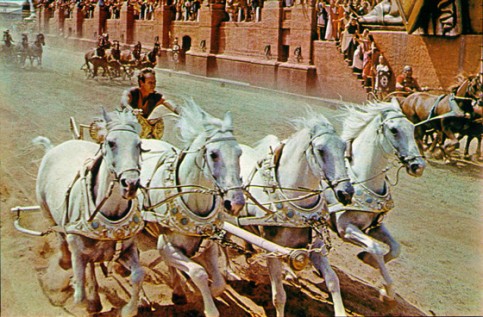
It is a wonder that Ben-Hur remains as one of the most exhilarating films Hollywood every made, as it runs close to four hours.
Ben-Hur is the tale of a Jewish man seeking revenge against a terrible betrayal. The chariot race scene is a classic piece of action cinema. It took five weeks to film, with tour buses visiting the monumental set frequently. George Lucas cites it as his inspiration to create the famous pod-race scene in The Phantom Menace.
Ben-Hur is pure, enjoyable entertainment. The movie is a remake of the 1925 version, and another remake is due for 2016.
The biblical epic holds a special place in cinema history. Quo Vadis and The Ten Commandments are all fantastic examples of this subgenre.
12. Dr. Zhivago (David Lean, 1965)
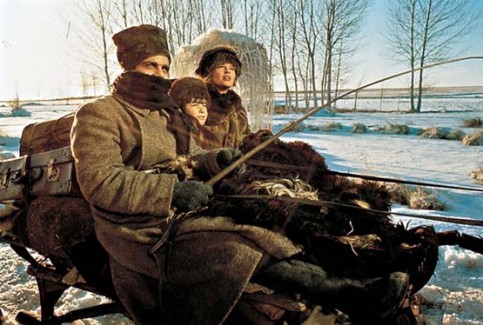
David Lean is the unquestionable master of the epic film, and Dr. Zhivago finds him at his most sentimental.
Yevgraf Zhivago tells the story of his half brother, Dr. Yuri Zhivago, to young Tonya. Yuri, a poet and a doctor, experiences defining moments in 20th century Russia. History unfolds in the background of a tender and troubled romance. The film encompasses from World War I to the rise of the USSR.
As the novel, written by Nobel Prize winner Boris Pasternak, was banned by the Soviet Union, David Lean had to film the picture in Spain. Outside of Madrid, he built an entire Moscow. It is hard not to marvel at the impressive scope and detail of the movie’s set design.
The final scene in Dr. Zhivago is sheer brilliance, a moment where the entire film comes together in a subtle burst of emotion.
11. War and Peace (Sergei Bondarchuk, 1966)
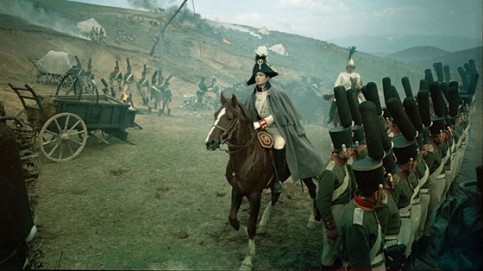
Clocking in at a daunting eight hours, War and Peace is the most ambitious and expensive film ever produced in the Soviet Union.
A love story intertwines with Napoleon’s Invasion of Russia in 1812. Director Sergey Bondarchuk masterfully adapts Leo Tolstoy’s classic into a movie as spectacular as it is intelligent. It tracks characters trying to wade the raging river of history.
The epic required a record-breaking 120,000 extras. The Red Army was even mobilized to shoot the awesome battle sequences. The Battle of Borodino remains one of the best ever recreated.
War and Peace won the Academy Award for Best Foreign Picture at the time of The Cold War. It was allegedly taken away from the filmmakers by Soviet authorities.
War and Peace provides a guideline as to what an epic should be: a movie restricted only by the filmmaker’s vision and audacity. It is well worth its running time.
10. The Lord of the Rings trilogy (Peter Jackson, 2001-2003)
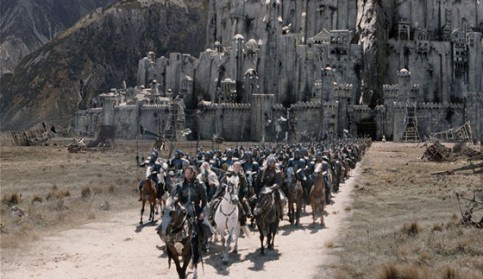
The odyssey to make Bad Taste prepared Peter Jackson to direct the films that would mark a generation.
The protagonists, no more than common folk fighting for the greater good, endure a perilous journey that puts their friendship to the test. The trilogy uses themes such as the bonds fellowship, and the prevailing power of hope, to create a fictional world more real to the audience than their own.
The third film, The Return of The King, won 11 Academy Awards, including Best Picture, Best Director, and Best Adapted Screenplay. J.R.R. Tolkien’s boundless imagination is given justice through the film’s scope.
Peter Jackson truly shows off his cinematic talent. His extraordinary use of montage to convey ideas and feelings at such mammoth scale helped establish the fantasy genre as one of the most important (and lucrative) at the start of the 21st century.
9. Andrei Rublev (Andrei Tarkovsky, 1966)
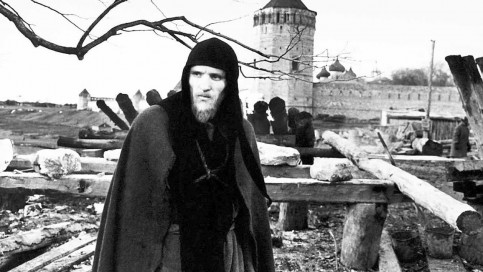
Andrei Tarkovsky is one of cinema’s heavyweights. His impressive repertoire of films, from Solaris to The Mirror, from Stalker to The Sacrifice, ranks him among the best directors that ever lived. Ingmar Bergman was a fan of his.
Andrei Rublev is Tarkovsky’s epic, and is nothing short of a masterpiece.
The film is based on an icon painter in 15th century Russia. It’s a story about an artist, a journey into the creation of art itself. Tarkovsky never spoon-feeds his audience, he doesn’t hold our hands, but only creates a subtle path for us to follow. We experience and feel its spiritual themes, not told about them.
Critically acclaimed as one of the best foreign films ever made, Andrei Rublev teaches us that an epic is ranked by the passion and ambition for the ideas behind it, rather than the money that backs it up.
8. The Good, the Bad, and the Ugly (Sergio Leone, 1966)
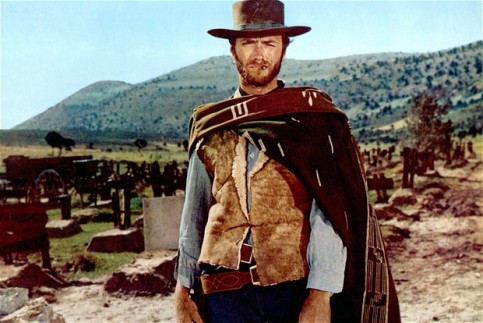
Sergio Leone makes it hard for us to pick a magnus opus from his films. Once Upon a Time in the West and Once Upon a Time in America could easily be ranked just as high in the list. Yet, it is the final installment of The Dollars Trilogy that sweeps all glory.
Two men ally themselves to find gold buried in a cemetery, before a third reaches it. A particular sequence stands out in the movie, a set piece that depicts Union troops trying to storm Confederates. The main characters intervene in the conflict, changing the world around them, something almost reminiscent of a medieval knight tale. Ironically, the characters must overcome this blood bath to get to their goal: a cemetery.
Leone chose to shoot his film in Spanish landscapes, having them doubled as America. The landscapes are arid and unforgiving, surpassed only by the characters that inhabit them. His is a brutal depiction of the Wild West, a place governed by the law of the cunning and the violent.
The climax of the movie remains one of the best scenes in cinema history, featuring the trademark style directors like Quentin Tarantino would employ in their own films.
The Good, The Bad, and The Ugly is the quintessential Spaghetti Western and one of the most palatable epics ever made.
7. Gone With The Wind (Victor Fleming, George Cukor, Sam Wood, 1939)
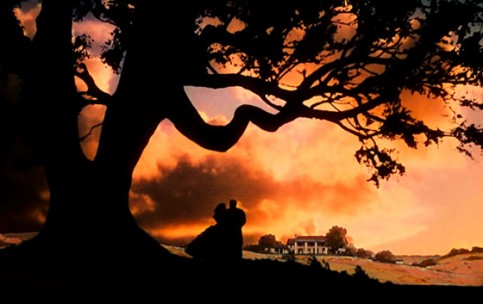
The definitive Hollywood epic, Gone With The Wind tells the classic story of love in times of war.
The romance between Scarlett and Rhett is among the most interesting and controversial in film. The characters are fueled by desire, duty, and lust. They provide us with a whirlwind of emotions, all unraveling with the Civil War as their background.
Clark Gable and Vivien Leigh give the performances of a lifetime. David O. Selznick, a legend in Hollywood at the time, produced the movie. He already had films such as Anna Karenina and A Tale of Two Cities under his belt, and went on to produce Hitchcock’s Rebecca, winning Best Picture at the Oscars for a second time.
Critics have torn the movie apart over the years. It has been criticized for ignoring slavery and segregation, while defending the South’s traditional values. It has even been charged with allusions to the Ku Klux Klan in particular scenes.
Gone with the Wind stands as the golden Hollywood film, the most beautiful and spectacular among melodramas.
6. Apocalypse Now (Francis Ford Coppola, 1979)
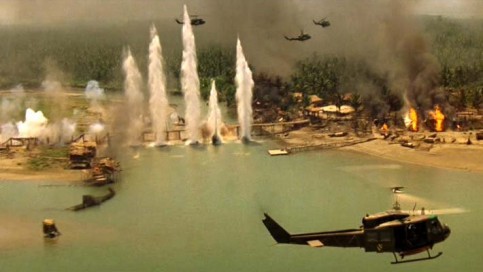
Francis Ford Coppola’s Apocalypse Now makes a strong case for the greatest war film ever made.
Adapted from Joseph Conrad’s Heart of Darkness, it tells the story of a death commando in Vietnam sent to murder an American colonel gone rogue. The characters navigate a river that takes them deeper into the jungle, into the heart of the war, making them as savage as their surroundings.
Coppola’s talent is at its peak when directing the battle sequences. We naturally enjoy the big explosions, the mighty guns, and the stench of testosterone running wild. We love every minute of it until the sequences take a twist. Civilians are in the way. Things get messy. We are suddenly repulsed with what’s happening on screen. No other movie delves as deep into the darkness within us all, the horrors from which war stems.
Like Herzog’s Fitzcarraldo, the making of Apocalypse Now is an epic movie on its own. The documentary film Heart of Darkness depicts Coppola’s struggle to make his vision come alive. To give an example, editor Walter Murch worked over two years in post-production to finish it.
Apocalypse Now is a terrifying and eye-opening experience.
5. Fitzcarraldo (Werner Herzog, 1982)
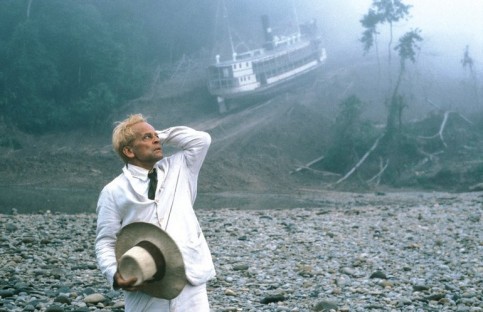
Epics are measurable by the sheer ambition behind them. Werner Herzog’s Fitzcarraldo stretches this statement beyond human limit. Herzog, hailed by Truffaut as one of the most important filmmaker in the world, explores the limits between passion, ambition, and obsession. It reeks of the sacrifice needed to bring a dream alive.
Carlos Fitzcarrald wants the rubber found in an inaccessible part of Peru’s jungles, guarded jealously by roaring rapids. The solution is simple: hoist a ship over a mountain. If he can achieve it, he will build an opera house in the middle of the jungle.
Herzog didn’t use miniatures or any sort of special effects. No, he in fact hoisted a 360-ton ship over a mountain. Needless to say, the production of Fitzcarraldo is legend in the world of film. The ordeal is told in the documentary Burden of Dreams. Herzog wrote his reflections on making the film in his awe-inspiring book: Conquest of the Useless.
Aguirre, The Wrath of God is another Herzog epic (very Conradian) that deserves mention. Popol-Vuh, the band that scored Fitzcarraldo and Nosferatu, collaborated with Herzog once again in this film.
4. Intolerance (D.W. Griffith, 1916)
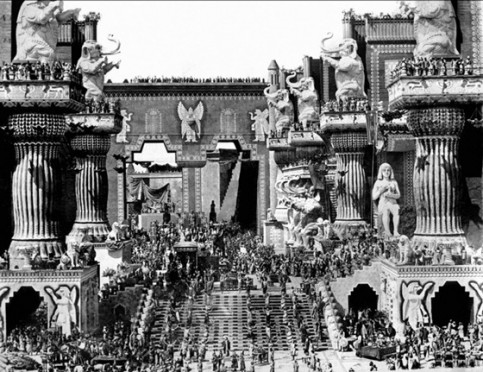
D.W. Griffith is cinema’s greatest pioneer. His commandment of editing, particularly of intercutting, has earned him the title as one of the fathers of the medium.
Griffith got a lot of backlash after producing his most famous film, Birth of a Nation. He was criticized for racism and praising the Ku Klux Klan. People even rioted to ban the film. This inspired Griffith to create his most ambitious dream, Intolerance.
The film consists of four storylines spanning over 2500 years of history: the fall of Babylon, the crucifixion of Christ, St. Bartholomew’s massacre in France, and one set in modern day America (at that time of course). They are all linked by Intolerance’s ravaging of humanity, or, as its title says, Love’s Struggle Throughout The Ages.
It was a mammoth production. The gigantic sets give the movie the scale dreamt by Griffith (there is even a homage to them in the videogame L.A. Noire). Extras delved so deep into their roles, they almost killed each other.
Intolerance is one of the greatest movies of the Silent Era. It’s a film to be experienced like a piece of music, to be compared with mankind’s greatest artistic achievements.
3. Seven Samurai (Akira Kurosawa, 1954)
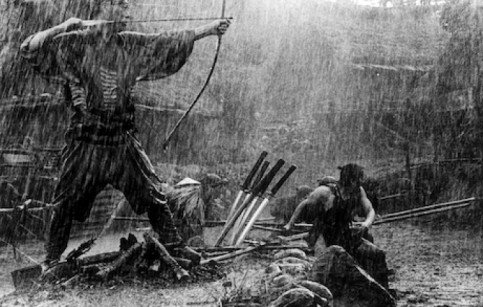
Seven Samurai has been widely called Akira Kurosawa’s greatest film (a very disputed title). Its epic battle sequences paired with unequaled storytelling definitely make it one of his most enjoyable.
A group of farmers seek the help of seven samurai to defend their village from bandit raids. Nowadays, this is a familiar action movie plot (the team assembled to fight evil). Western movies owe so much to Kurosawa.
Seven Samurai is a tale of duty, interestingly criticizing the ideal at the same time. The haunting final shot lingers in our minds long after the movie is over. The burying wind almost escorts us out of the theatre, and makes us look at society just a little differently. Roger Ebert notes something very interesting: After Seven Samurai, Kurosawa started making very pro-individual films (best exemplified in Ikiru).
Kurosawa is not only a titan among directors, but he is also one of the best writers that ever lived, standing right alongside Ingmar Bergman in that regard. His devotion to themes and characters paved the road for so many filmmakers after him.
2. Lawrence of Arabia (David Lean, 1962)
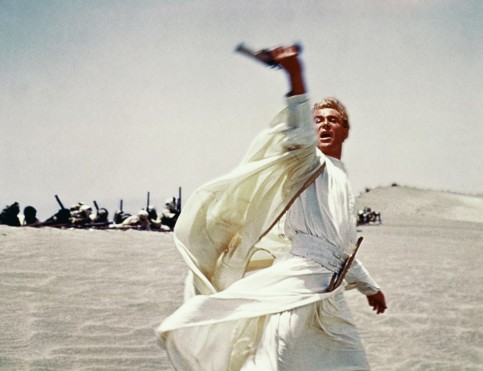
This is David Lean’s masterpiece. Enough said. The poetry behind every shot, every cut, and every facial expression is outstanding.
T.E. Lawrence is sent by the British army to operate in the Arab Peninsula in World War I. His character is among the most complex ever captured on film. Peter O’Toole gives a once in a lifetime performance, he is able to express Lawrence’s struggle for identity in a single stare.
Lean is at the top of his game. There is a cut that stands out above all others. Once Lawrence is assigned his mission, he lights a match and stares straight into the flame. “It is recognized that you have a funny sense of fun,” says Dryden, the commanding officer. Lawrence blows out the match and we smash cut into the red furnace of the desert. This is one of the most famous cuts in film history, and with good reason.
Lawrence of Arabia is magnificent for its spectacle and depth. It is a well of inspiration for any artist. So why isn’t it number one in our list?
1. 2001: A Space Odyssey (Stanley Kubrick ,1968)
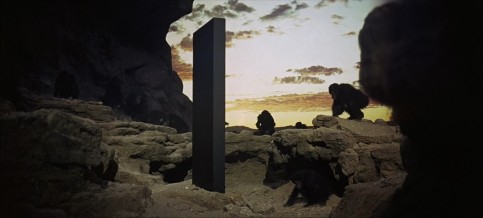
2001 is not only the best epic film around; it makes a strong case for the best movie ever created.
“Let’s make a really good science fiction film”, said Stanley Kubrick to Arthur C. Clarke before writing the screenplay. And they did. Their imagination is boundless, as they tell the story of human evolution before the eyes of the cosmos.
It opens at the dawn of man. We are pathetic, foraging for food in an arid landscape, not intelligent enough to even notice the abundance of delicious meat around us. Then, the monolith, one of the emblems of cinematic history, appears. Suddenly, we not only know how to kill animals around us for survival, but each other to ensure it. This pattern marks 2001, as humanity follows the monoliths like breadcrumbs across the solar system, into what might be our magnificent and terrifying destiny.
So what are the monoliths? No one knows. Maybe aliens. Maybe divine intervention. Us? Kubrick wisely piles this question up with so many more the film offers unanswered.
Of course, the character that stands out of the entire film is the ship’s computer, HAL. More than simply a villain, HAL is a scared being, forced by our own evil to question himself and those around him.
Pink Floyd turned down an offer to perform music for the film. Upon watching it, they devised one of their most famous songs, Echoes, to synchronize with the last part of the film (Jupiter and Beyond the Infinite). You can find this version on YouTube.
2001 is a melody, a poem that can be re-experienced time and time again. Something new will always stands out, either of the film or of yourself. It is a piece to savor for the brilliance of its ideas and the melodious emotions that beat in every frame.
Santiago Sánchez

You must be logged in to post a comment Login